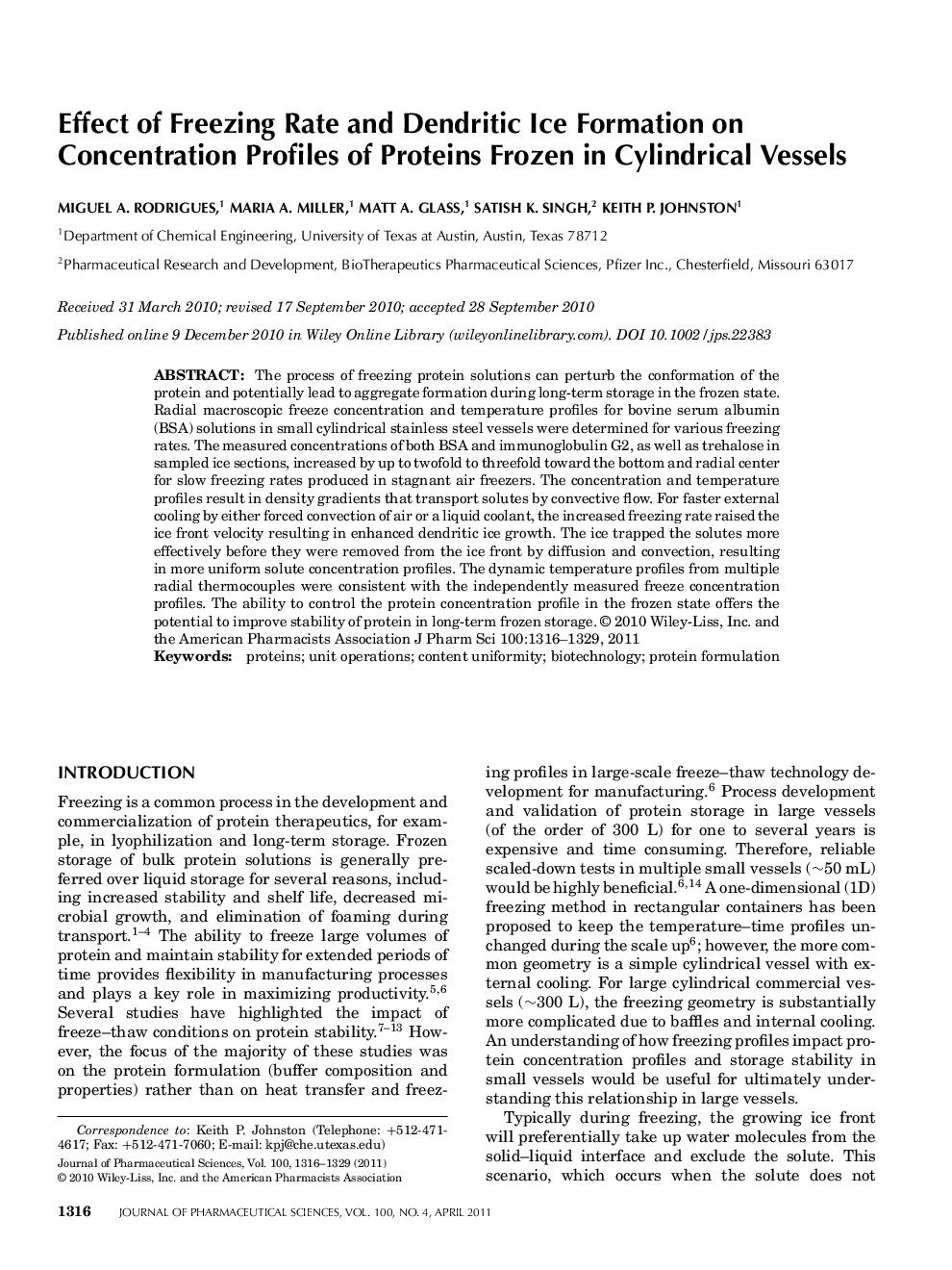| Article ID | Journal | Published Year | Pages | File Type |
|---|---|---|---|---|
| 2486663 | Journal of Pharmaceutical Sciences | 2011 | 14 Pages |
Abstract
The process of freezing protein solutions can perturb the conformation of the protein and potentially lead to aggregate formation during long-term storage in the frozen state. Radial macroscopic freeze concentration and temperature profiles for bovine serum albumin (BSA) solutions in small cylindrical stainless steel vessels were determined for various freezing rates. The measured concentrations of both BSA and immunoglobulin G2, as well as trehalose in sampled ice sections, increased by up to twofold to threefold toward the bottom and radial center for slow freezing rates produced in stagnant air freezers. The concentration and temperature profiles result in density gradients that transport solutes by convective flow. For faster external cooling by either forced convection of air or a liquid coolant, the increased freezing rate raised the ice front velocity resulting in enhanced dendritic ice growth. The ice trapped the solutes more effectively before they were removed from the ice front by diffusion and convection, resulting in more uniform solute concentration profiles. The dynamic temperature profiles from multiple radial thermocouples were consistent with the independently measured freeze concentration profiles. The ability to control the protein concentration profile in the frozen state offers the potential to improve stability of protein in long-term frozen storage.
Related Topics
Health Sciences
Pharmacology, Toxicology and Pharmaceutical Science
Drug Discovery
Authors
Miguel A. Rodrigues, Maria A. Miller, Matt A. Glass, Satish K. Singh, Keith P. Johnston,
